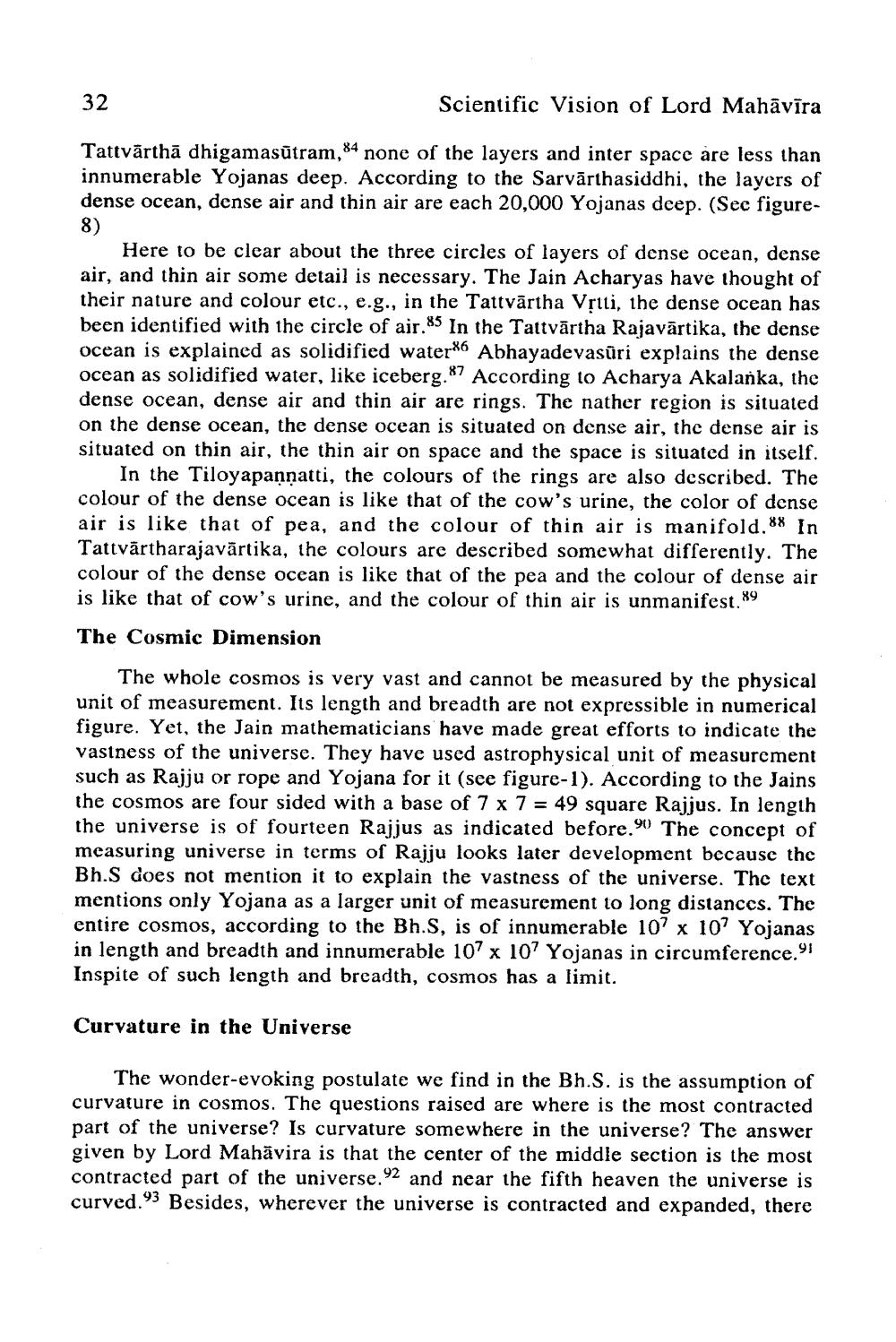________________
Scientific Vision of Lord Mahāvīra
Tattvärtha dhigamasutram,84 none of the layers and inter space are less than innumerable Yojanas deep. According to the Sarvarthasiddhi, the layers of dense ocean, dense air and thin air are each 20,000 Yojanas deep. (See figure8)
32
Here to be clear about the three circles of layers of dense ocean, dense air, and thin air some detail is necessary. The Jain Acharyas have thought of their nature and colour etc., e.g., in the Tattvärtha Vṛtti, the dense ocean has been identified with the circle of air.85 In the Tattvärtha Rajavārtika, the dense ocean is explained as solidified water6 Abhayadevasuri explains the dense ocean as solidified water, like iceberg.87 According to Acharya Akalanka, the dense ocean, dense air and thin air are rings. The nather region is situated on the dense ocean, the dense ocean is situated on dense air, the dense air is situated on thin air, the thin air on space and the space is situated in itself.
In the Tiloyapannatti, the colours of the rings are also described. The colour of the dense ocean is like that of the cow's urine, the color of dense air is like that of pea, and the colour of thin air is manifold. 88 In Tattvärtharajavārtika, the colours are described somewhat differently. The colour of the dense ocean is like that of the pea and the colour of dense air is like that of cow's urine, and the colour of thin air is unmanifest.89
The Cosmic Dimension
The whole cosmos is very vast and cannot be measured by the physical unit of measurement. Its length and breadth are not expressible in numerical figure. Yet, the Jain mathematicians have made great efforts to indicate the vastness of the universe. They have used astrophysical unit of measurement such as Rajju or rope and Yojana for it (see figure-1). According to the Jains the cosmos are four sided with a base of 7 x 7 = 49 square Rajjus. In length the universe is of fourteen Rajjus as indicated before." The concept of measuring universe in terms of Rajju looks later development because the Bh.S does not mention it to explain the vastness of the universe. The text mentions only Yojana as a larger unit of measurement to long distances. The entire cosmos, according to the Bh.S, is of innumerable 107 x 107 Yojanas in length and breadth and innumerable 107 x 107 Yojanas in circumference.91 Inspite of such length and breadth, cosmos has a limit.
Curvature in the Universe
The wonder-evoking postulate we find in the Bh.S. is the assumption of curvature in cosmos. The questions raised are where is the most contracted part of the universe? Is curvature somewhere in the universe? The answer given by Lord Mahavira is that the center of the middle section is the most contracted part of the universe. 92 and near the fifth heaven the universe is curved.93 Besides, wherever the universe is contracted and expanded, there




